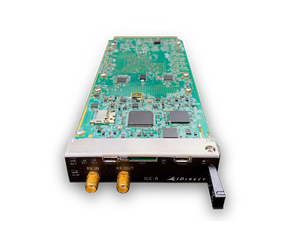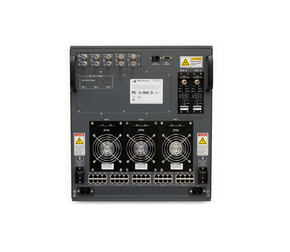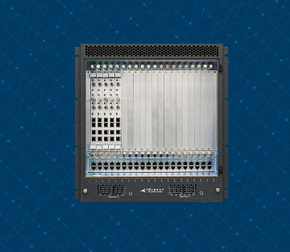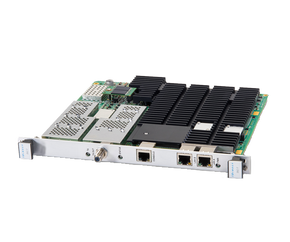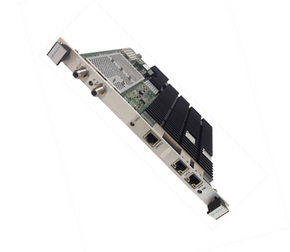Core Features of the Velocity Intelligent Hub
- Houses up to 12 compact Intelligent Line Cards
- Supports multiple waveforms (DVB-S2/DVB-S2X-ready) for network flexibility
- Supports multiple transmit and receive carriers for high throughput operations
- Standards-based μTCA architecture improves modularity and supportability
- Pay-as-you-grow model
- Redundant 10GbE SFP+ LAN interfaces aggregate traffic to minimize cabling and switching costs
- Fully redundant and hot-swappable data, control, timing, cooling, and power modules ensure high availability
- Compatible with both traditional SAS and cloud-based central data center (CDC) environments
The Intelligent Hub (iHub) and Line Card system provides the high performance needed for today’s IP broadband networks in a high density package that provides market leading throughput and reduces total cost of ownership. With iHub, operators can meet the need for high quality connectivity today and be assured of capacity and scale as bandwidth demand increases.
Best-in-Class Density
The iHub supports up to 12 line cards within a compact 3RU chassis. When deployed with 4 transmit and 8 receive line cards as a common configuration, the iHub will support an unprecedented level of aggregate bandwidth. The iHub’s embedded 10/40 GbE backplane and 10 GbE external interfaces minimize the need for additional switch infrastructure when deployed with the iGateway compute platform.
Best-in-Class Performance
The ILC-T transmit line cards will support multiple DVB-S2X forward carriers up to 500 MHz /475Msps* per carrier. The ILC-R receive line cards will support multi-carrier Adaptive TDMA returns at aggregate rates of
up to 120Msps, with future support for DVB-S2X returns.
Flexible Deployment Architectures
The iHub’s compact design suits it well for a variety of deployment architectures. For large HTS gateways, multiple iHub chassis can be deployed to support hundreds of high-capacity beams within a single equipment rack. For emerging distributed HTS gateways, a single iHub can be deployed within a standard IT closet. This flexible approach enables the iHub to be ideally suited for both large GEO satellites and emerging LEO/MEO satellites.











